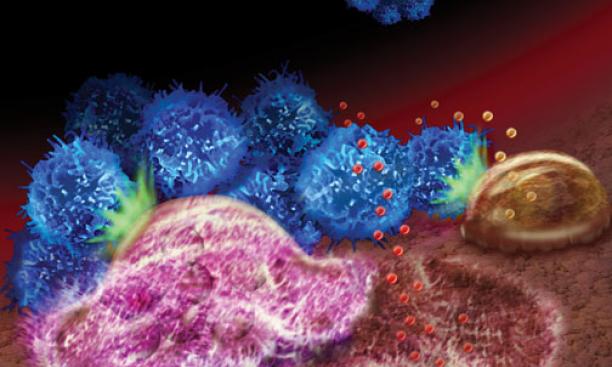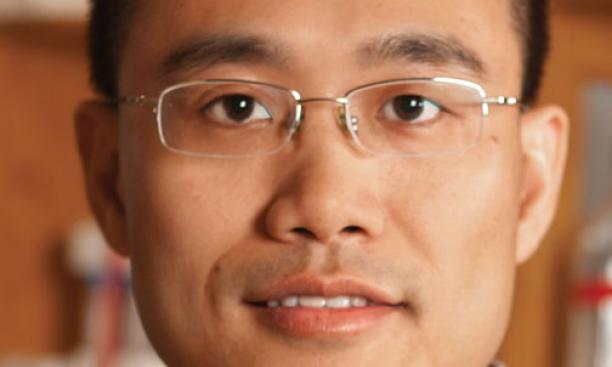

THE DISCOVERY Bone metastasis is the advanced stage of cancer when new tumors form at various sites in the body and drugs and surgery no longer can cure the disease. How tumor cells metastasize is not clear. Recent research by Princeton professor Yibin Kang shows how cancer cells manipulate their environment — in this case, bone tissue — to aid their growth while degrading the surrounding tissue.
Kang has identified a protein called Jagged1, made by the tumor cells, that helps tumors grow within the bone tissue by revving up the activity of bone cells called osteoclasts. Osteoclasts work to break down bone tissue — a process that constantly takes place in bones but normally is balanced by the creation of new tissue. Cancer-cell invasion of the bone tissue results in overstimulation of these osteoclast cells, tipping the balance toward more bone breakdown, and Jagged1 accelerates this process. As more bone tissue breaks down, other processes are activated, further fueling tumor growth and creating a downward spiral.
Blocking Jagged1 is a potential therapy that could lead to slower tumor growth in the bone tissue or possibly prevent bone metastasis altogether. While Kang’s studies have focused on breast cancer, he says his findings apply to other cancers.

THE SCIENTIST Kang, a professor of molecular biology, says his lab focuses on how tumor cells are attracted to bone tissue and are able to grow in this tissue. Most cancer deaths take place after metastasis, but many cancer researchers have taken a defeatist approach to this final phase in cancer growth. It is a complicated process, and technically difficult to study, Kang says. His lab has developed live mouse models and imaging techniques that allow researchers to track tumor cells as they circulate through the blood system, attach to bone tissue, and begin to form tumors there. In April, Kang was honored with the Award for Outstanding Achievement in Cancer Research, given to a scientist under 40 years old at the American Association for Cancer Research’s annual conference.
WHAT’S NEXT IN THE KANG LAB Kang is collaborating with Amgen, a California-based biotechnology company that has developed an antibody against Jagged1. The goal is to move the recent discovery into the clinic. The laboratory also is continuing work to understand how bone metastasis occurs.
